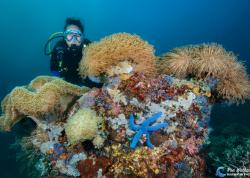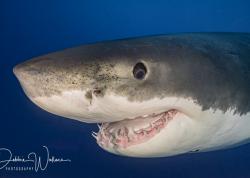Japan’s Hidden Treasure - the Ogasawara Islands
Located 1000 km from mainland Japan, the Ogasawara Islands provide a unique experience to visitors patient enough to make the trip from Tokyo harbor. Although the country of Japan is part of Asia, the Ogasawara islands are geographically part of the Oceania region. In Ogasawara there are only two islands people are allowed live on; Chichijima and Hahajima. Chichijima is the main island I visited this time, which has a population of about 2000. Hahajima is 2 hours from Chichijima by a small ferry, and only has a population of 500.
I’ve traveled to Cuba, Mexico, Belize, Indonesia, and other locations, but Ogasawara was the most difficult to get to of anywhere I’ve been diving. To get to the Ogasawara islands, you need to book a ferry called “Ogasawara-Maru”, which takes about 26 hours to go from Takeshiba harbor, Tokyo to Chichijima, Tokyo (the Ogasawara islands are still technically a part of Tokyo). During the off-season, the ferry only goes to the island once a week. During the peak-season (summer), the ferry goes to the Ogasawara islands once every five days.
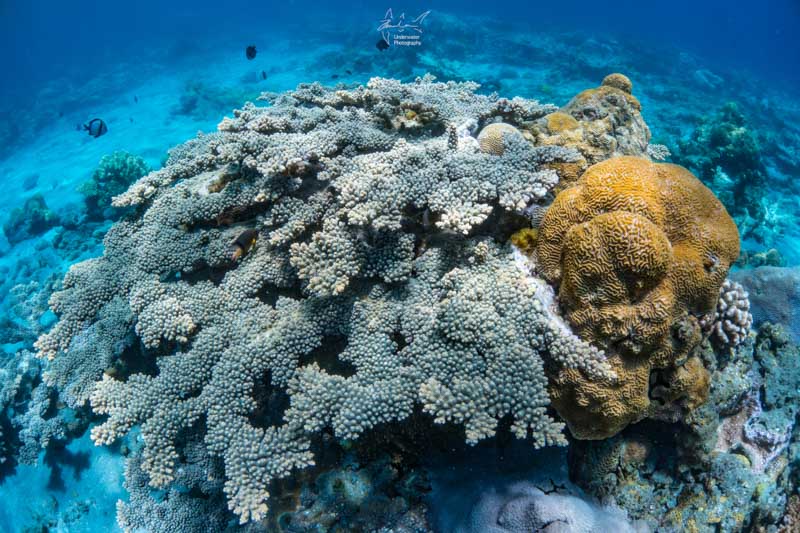

Ogasawara is known for nighttime land tours to see its endemic species, such as the Ogasawara pigeon and the glowing mushroom. Unfortunately, I didn’t have enough time (or was too lazy….) to do the land tour; instead, I spent most of my time there on a nice blue ocean also known as “Benin-Blue”. There are several diving centers that divers can connect with, but it’s not easy for divers from other countries. At the Ogasawara islands, most of the marine sports operators don’t speak fluent English. Fortunately, I can speak a little bit of Japanese, and my dive guide tried to give as much information as possible in English while I was diving with him. I dove with a dive center called “Papa’s Diving Studio.” They have a nice diving boat with a dry area. I was surprised that even though I was the only diver going out, they took me on the nice boat with a great dive-guide-to-diver ratio of 1:1!
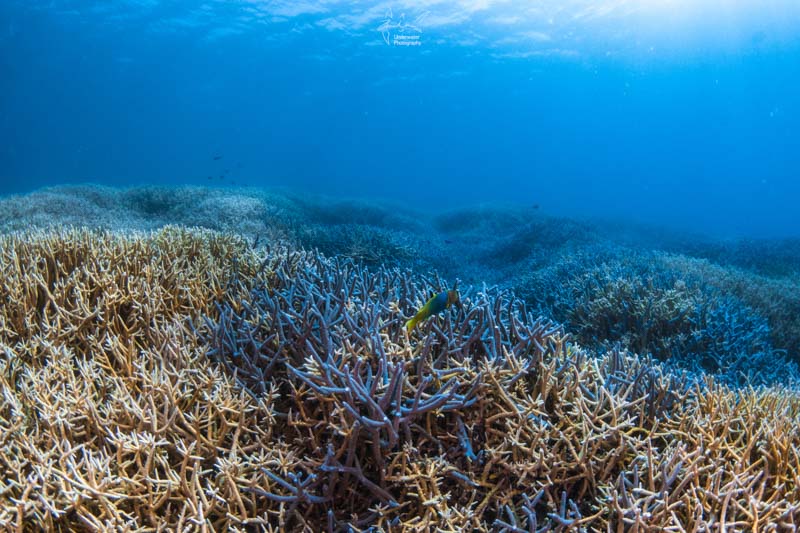

Conditions
Diving conditions at Ogasawara were not what I expected. I was there for 12 days from the middle of May to the end of May, and it was hot on land. However, it was so cold underwater that some divers from Taiwan thought they needed drysuits! Even though it was a nice tropical region, the water temperature was between 22 to 25 degrees Celsius (71 to 77 F). We were usually at depths of 15m to 25m (50 to 80 feet), but we went deeper when I was looking for some big fish like sand tiger sharks and pelagic rays. Diving could be either easy or difficult, depending on what you want. Most of the diving around coral reefs was relatively easy. However, looking for some big fish made diving quite difficult. Some of the diving locations in Ogasawara had crazy current in which I was not able to move forward at all with my ScubaPro Jet Fins.
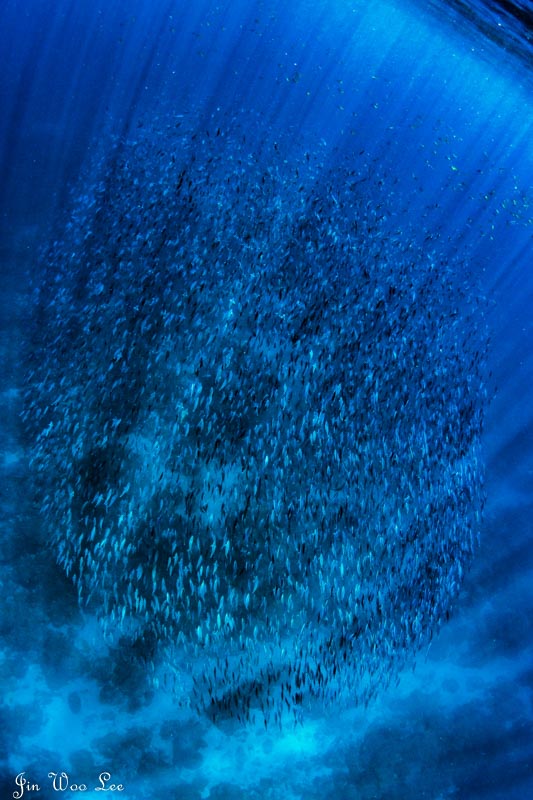
Tuna
In this high-current environment, it was easy to see schooling dogtooth tunas; however, I don’t recommend bringing a fancy camera rig for photography! I cannot forget diving around Minamijim, as I saw tunas and eagle rays there, but I couldn’t hold my camera with my one weak arm against the current. But don’t worry, I was able to see tunas in much better conditions on a special trip Yomejima. One of the diving points there is called “Maguro Ana” which means “Tuna Hole” in English. Under the arch, there were many dog tooth tunas swimming around and chilling, and I got some chances to shoot photos of them.

Whales and Dolphins
The Ogasawara islands are also known for whales and dolphins. I was there during the season that Humpback whales and Sperm whales are expected to show up close to shore. So, I went on a Sperm whale trip for two days, but instead of Sperm whales I got to see Humpbacks!
Dolphins, on the other hand, are common around the Ogasawara Islands throughout the year. There are two species around the islands: Spinner and Indo-Pacific bottlenose dolphins. I was lucky enough to see them almost every day I went diving, and the owner of the Papa’s Diving Studio, Mr. Hoshino, allowed me to jump into the water and take photos of them. This was one of my favorite things I did while I was on the island. The dolphins were friendly enough to hang out with divers for couple of minutes!

Endemic Fishes
Around Ogasawara, there are also a few endemic species of fishes, including varieties of clownfish and butterflyfish. I didn’t get to see any of the clownfishes, but I got to see Wrought Iron Butterflyfish for the first time in my life, which look like they are covered by iron armor. They were really neat!
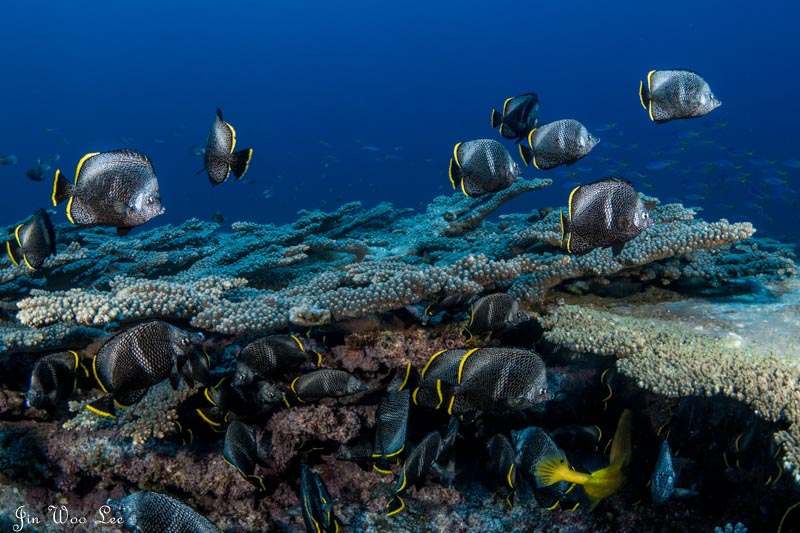
My Thoughts
Was it worth spending a lot of money and time to go the Ogasawara islands? Yes, and I will go back there again. Along with enjoying the diving, I also enjoyed the culture and people there. Even though I was a foreigner who could speak a minimal amount of Japanese, people were so helpful and friendly. What is more is that I was invited to a BBQ party at a bar called “Yankee Town,” whose owner is an ex-military soldier! I had good time learning about the history of Ogasawara, with good drinks there with other divers.
If you are willing to go these exotic islands, I highly recommend doing some dolphin swimming and whale watching. Swimming with dolphins is almost guaranteed and there is a good chance of seeing whales, during the whale season. Also, kayaking and snorkeling around is fun. When walking around the island with my wetsuit and camera, I found good place called “Sakaiura Beach,” which had a ship wreck. I snorkeled and took some nice over-under shots there. What more can I ask from the Ogasawara Islands?
Additional Reading
Jin Woo Lee shoots with a compact camera, the Sony RX100 V. Check out our detailed RX100 V review, which has more of his great photos as well!
Gear Links



RECOMMENDED ARTICLES
SUPPORT THE UNDERWATER PHOTOGRAPHY GUIDE:
The Best Service & Prices on u/w Photo Gear
 Visit Bluewater Photo & Video for all your underwater photography and video gear. Click, or call the team at (310) 633-5052 for expert advice!
Visit Bluewater Photo & Video for all your underwater photography and video gear. Click, or call the team at (310) 633-5052 for expert advice!
The Best Pricing, Service & Expert Advice to Book your Dive Trips
 Bluewater Travel is your full-service scuba travel agency. Let our expert advisers plan and book your next dive vacation. Run by divers, for divers.
Bluewater Travel is your full-service scuba travel agency. Let our expert advisers plan and book your next dive vacation. Run by divers, for divers.




